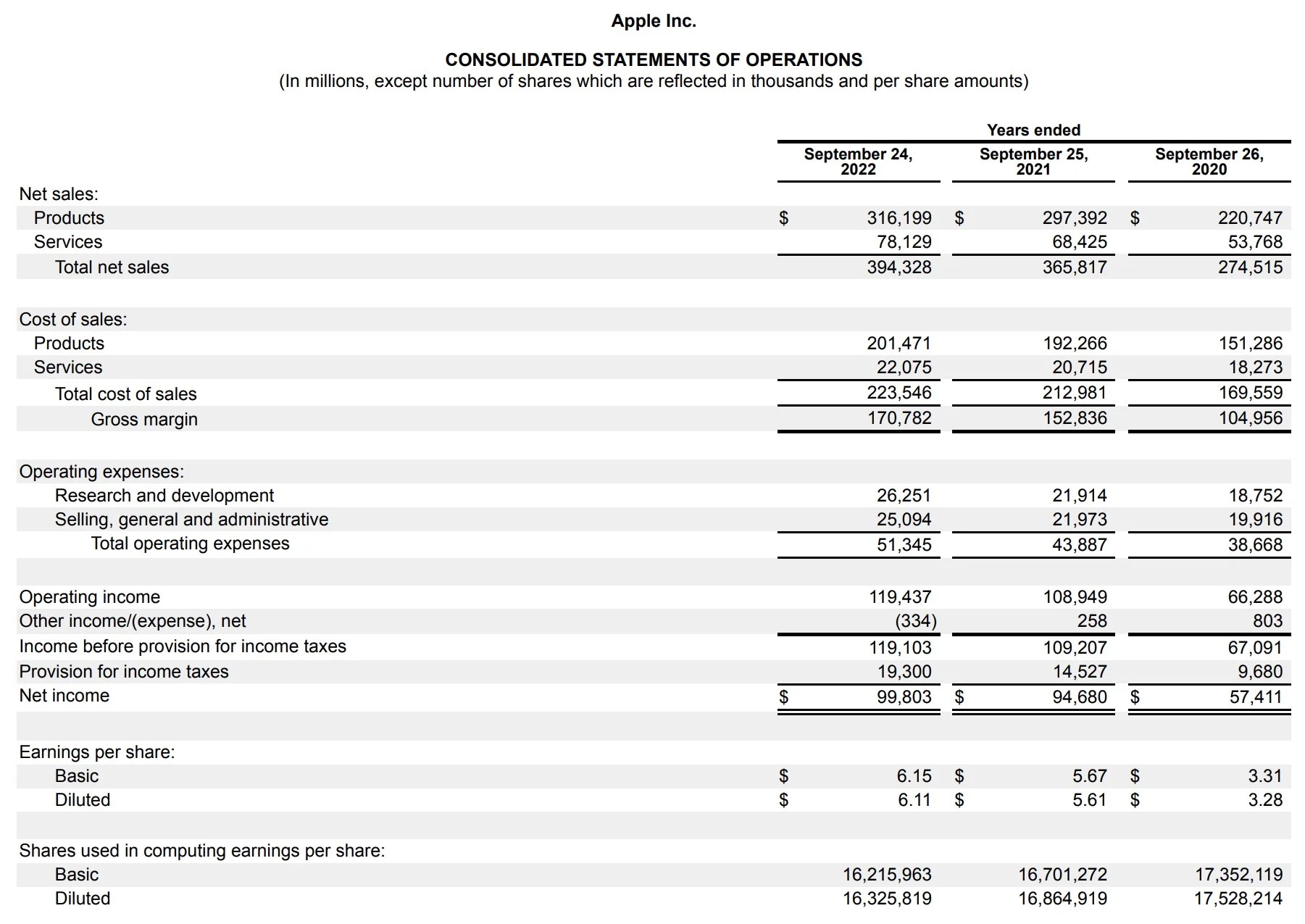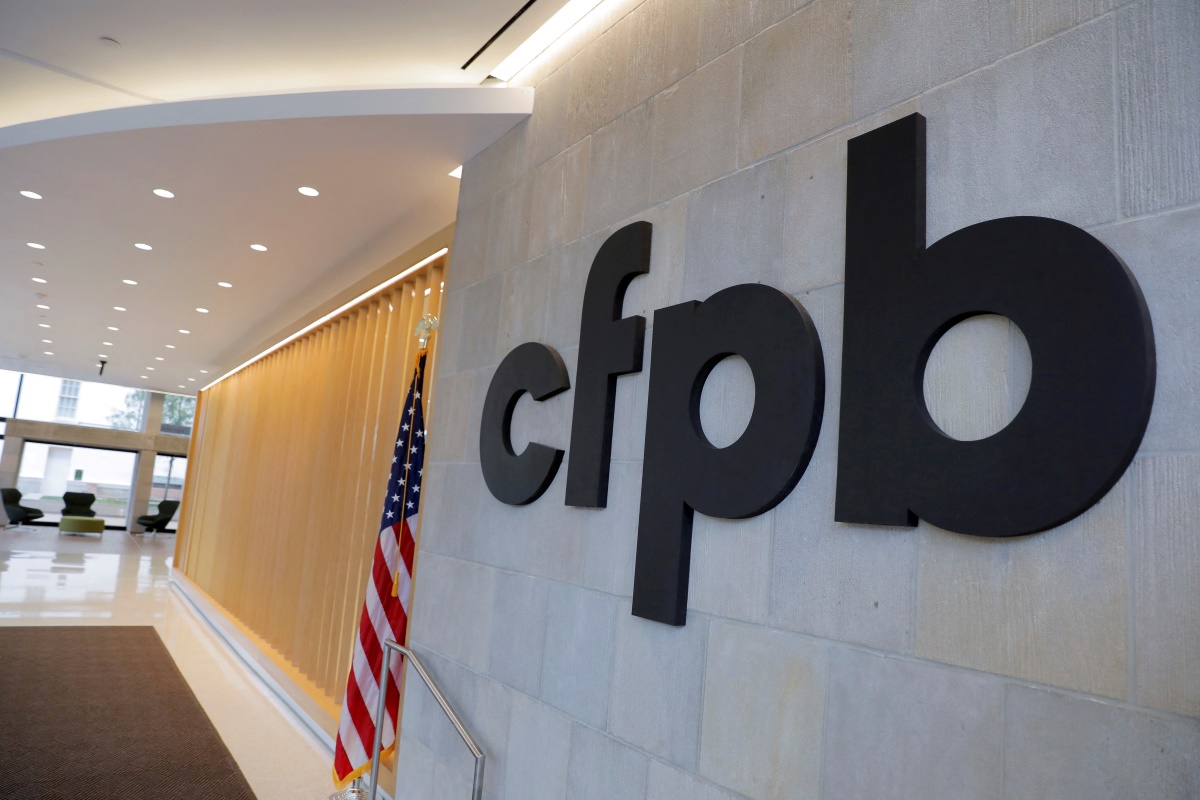

Finance
What Are Credit Losses
Published: January 13, 2024
Discover the impact of credit losses in finance and gain insights into managing financial risk. Learn more about credit loss mitigation strategies and industry best practices.
(Many of the links in this article redirect to a specific reviewed product. Your purchase of these products through affiliate links helps to generate commission for LiveWell, at no extra cost. Learn more)
Table of Contents
Introduction
Welcome to our comprehensive guide on credit losses. In the world of finance, credit losses play a significant role in the stability and profitability of financial institutions. Understanding credit losses is crucial, as they impact not only banks and lending institutions but also the overall economy.
Credit losses refer to the inability of borrowers or debtors to fulfill their contractual payment obligations, resulting in financial losses for the lenders or creditors. These losses can occur due to various reasons, such as default on loans, bankruptcy, insolvency, or economic downturns.
Financial institutions face the constant challenge of managing credit risk and mitigating potential credit losses. Effective risk management practices and strategies are essential to minimize the impact of credit losses on their balance sheets and ensure their long-term sustainability.
This article aims to provide a comprehensive understanding of credit losses, including their causes, impact on financial institutions, measurement and reporting, and strategies to manage and mitigate these losses. Whether you are a financial professional, investor, or someone interested in the workings of the finance industry, this guide will equip you with valuable insights.
So, let’s dive in and explore the world of credit losses and how they shape the financial landscape!
Definition of Credit Losses
Credit losses, also known as loan losses or credit impairments, refer to the financial losses incurred by financial institutions as a result of borrowers or debtors being unable to meet their payment obligations. In simple terms, it is the loss that a lender experiences when a borrower fails to repay the borrowed funds.
These losses can occur in various forms, including:
- Loan defaults: When a borrower fails to make the required loan payments or becomes incapable of repaying the outstanding amount, it results in a loan default.
- Bankruptcy: In cases where individuals or businesses declare bankruptcy, their outstanding debts become uncollectible, leading to credit losses for the lenders.
- Insolvency: When a borrower’s assets are insufficient to cover their debts, they are considered insolvent. Credit losses may occur if the lender is unable to recover the full amount owed.
- Debt restructuring: Sometimes, lenders may agree to restructure a borrower’s debt by modifying the terms of repayment. However, this can lead to credit losses if the borrower still fails to meet the revised payment obligations.
Financial institutions, such as banks, credit unions, and other lending institutions, are most commonly affected by credit losses. These institutions provide loans and credit facilities to individuals, businesses, and other entities. When borrowers default on their loan payments or fail to fulfill their debt obligations, it results in a decline in the value of the loans or debts held by the lenders. This reduction in value represents the credit losses incurred by the institutions.
It’s important to note that credit losses can occur in any economic environment. During periods of economic downturn or recession, credit losses tend to increase as borrowers face financial difficulties, leading to higher default rates. Conversely, during economic upturns, credit losses may decrease as borrowers have better financial stability.
Financial institutions must carefully monitor and manage credit losses to protect their financial health and ensure their long-term viability. This involves implementing robust risk management strategies, conducting thorough credit assessments, and establishing appropriate provisions for potential losses.
Causes of Credit Losses
There are several factors that can contribute to credit losses for financial institutions. Understanding these causes is crucial for effectively managing credit risk and minimizing potential losses. Here are some common causes of credit losses:
- Economic Downturn: During periods of economic recession or downturn, individuals and businesses may struggle to generate sufficient income or maintain stable cash flows. This can lead to higher default rates and an increase in credit losses for lenders.
- Industry-specific Risks: Certain industries, such as manufacturing, construction, or hospitality, are more prone to economic fluctuations and operational risks. Lenders who have significant exposure to these industries may experience higher credit losses if borrowers in these sectors face financial difficulties.
- Weak Credit Assessment: Inadequate credit assessment practices, such as not thoroughly evaluating borrowers’ creditworthiness, can result in lending to high-risk individuals or businesses. This increases the likelihood of default and, consequently, credit losses for lenders.
- Unforeseen Events: Unexpected events, such as natural disasters, pandemics, or political instability, can significantly impact borrowers’ ability to fulfill their debt obligations. These unforeseen circumstances can lead to increased credit losses for financial institutions.
- Poor Debt Recovery: Inefficient debt recovery processes can contribute to higher credit losses. If lenders are unable to effectively recover the outstanding debts, either due to ineffective collection methods or legal constraints, it can result in significant financial losses.
It’s important to note that credit losses are inherent to the lending business and cannot be completely eliminated. However, financial institutions can adopt various strategies and risk management practices to mitigate the impact of credit losses on their operations and profitability.
By closely monitoring the economic environment, implementing robust credit risk assessment methodologies, and regularly reviewing and updating credit portfolios, lenders can reduce the likelihood and severity of credit losses. Additionally, maintaining adequate provisions for potential credit losses and diversifying lending exposures across different industries and geographies can help mitigate the impact of credit losses on financial institutions.
In the next section, we will explore the impact of credit losses on financial institutions and why effectively managing these losses is crucial for their sustainability.
Impact of Credit Losses on Financial Institutions
The impact of credit losses on financial institutions can be significant, affecting their financial stability, profitability, and overall operations. Let’s delve into the key areas where credit losses can have an impact:
- Financial Health: When borrowers default on their loan payments or fail to meet their debt obligations, it leads to a reduction in the value of the loans or debts held by financial institutions. This, in turn, can weaken their financial health and impair their ability to fulfill their own financial obligations.
- Profitability: Credit losses directly impact a financial institution’s profitability. When loans become non-performing or go into default, the institution not only loses the principal amount but also the interest income it would have earned. This can significantly dent the institution’s earnings and erode its profitability.
- Capital Adequacy: Credit losses can erode a financial institution’s capital base. If the losses are substantial or sustained over a period of time, it can result in a decline in the institution’s capital adequacy ratio. This ratio measures the institution’s ability to absorb losses and meet regulatory capital requirements.
- Liquidity: Credit losses can affect a financial institution’s liquidity position. If a significant percentage of loans become non-performing, it can tie up funds that could otherwise be used for lending or other income-generating activities. This can strain the institution’s liquidity and limit its ability to meet its own payment obligations.
- Reputation: Credit losses can also impact a financial institution’s reputation in the market. If an institution is known for high default rates or poor credit quality, it may find it challenging to attract new borrowers or retain existing customers. This can lead to a loss of market share and hinder future growth prospects.
- Regulatory Compliance: Financial institutions are subject to regulatory guidelines and requirements regarding credit risk management. Failure to effectively manage credit losses can result in regulatory penalties, additional scrutiny, and potential restrictions on the institution’s operations.
Given the wide-ranging impact of credit losses, it is crucial for financial institutions to proactively manage and mitigate these risks. Implementing robust risk management frameworks, conducting thorough credit assessments, and maintaining appropriate provisions for potential losses are essential steps in protecting the financial institution’s stability and long-term sustainability.
In the next section, we will explore credit loss measurement and reporting, which plays a vital role in effectively managing credit losses.
Credit Loss Measurement and Reporting
Credit loss measurement and reporting are crucial aspects of managing credit risk and ensuring transparency in financial institutions. Accurate measurement and reporting of credit losses provide valuable insights into the institution’s credit quality and help stakeholders make informed decisions. Let’s delve into the key considerations in credit loss measurement and reporting:
1. International Financial Reporting Standards (IFRS): Under the IFRS framework, financial institutions are required to estimate and report credit losses using an expected credit loss model. This model focuses on recognizing and providing for credit losses based on the probability of default, exposure at default, and the expected loss given default. The IFRS 9 standard prescribes specific guidelines for credit loss measurement and reporting.
2. Data Analysis and Modeling: Financial institutions use historical data, borrower information, economic indicators, and risk models to estimate credit losses. They analyze credit portfolio performance and conduct stress tests to assess potential losses under different economic scenarios. Advanced modeling techniques, such as probability of default (PD), loss given default (LGD), and exposure at default (EAD), are employed to quantify credit risk and measure potential losses.
3. Credit Provisioning: Financial institutions set aside provisions to cover potential credit losses. Provisions act as a buffer against anticipated future losses, ensuring that the institution has sufficient capital to absorb impairments. Provisions are determined based on factors such as historical loss experience, economic conditions, and the credit quality of the portfolio.
4. Reporting Formats: Financial institutions are required to disclose their credit risk exposure, loan impairment provisions, and credit loss information in their financial statements. This includes providing details on the composition of their loan portfolios, the classification of loans, and the level of non-performing loans. This transparency allows stakeholders, including investors, regulators, and analysts, to assess the institution’s credit risk profile and make informed judgments about its financial health.
5. Scenario Analysis and Sensitivity Testing: To enhance the accuracy of credit loss estimation, financial institutions conduct scenario analysis and sensitivity testing. This involves assessing the impact of different macroeconomic factors, such as GDP growth, interest rates, and unemployment rates, on credit losses. By considering a range of potential scenarios, institutions can better understand the potential range of credit losses and make more robust decisions.
6. Regulatory Compliance: Financial institutions must adhere to regulatory requirements regarding credit loss measurement and reporting. Regulatory authorities, such as central banks and financial regulators, set guidelines for credit risk management and require institutions to regularly report on credit quality and loss provisions. Compliance with these regulations ensures the transparency and accountability of financial institutions.
Effective credit loss measurement and reporting enable financial institutions to identify and manage credit risk proactively. It provides stakeholders with a clear understanding of the institution’s credit quality and resilience, enhancing trust and confidence in its operations.
Next, we will explore strategies to manage and mitigate credit losses effectively.
Strategies to Manage Credit Losses
Financial institutions employ various strategies to manage and mitigate credit losses effectively. By implementing robust risk management practices, conducting thorough credit assessments, and establishing proactive measures, institutions can minimize the impact of credit losses on their operations. Let’s explore some key strategies:
1. Effective Credit Risk Management: Financial institutions should have robust credit risk management frameworks in place. This includes developing clear credit policies and guidelines, conducting rigorous credit assessments, and continuously monitoring the credit quality of borrowers. Regular review and updating of credit policies based on changing market conditions and evolving borrower profiles is essential.
2. Diversification of Lending Portfolios: Spreading lending exposure across different industries, geographies, and borrower profiles is a key strategy to manage credit losses. By diversifying their loan portfolios, financial institutions reduce the concentration risk associated with specific sectors or regions, thereby minimizing the impact of economic downturns on their overall credit quality.
3. Thorough Credit Assessments: Conducting thorough credit assessments before approving loans is critical. This involves evaluating borrowers’ creditworthiness, assessing their ability to repay the loan, and considering their collateral or security. Adequate due diligence helps identify potential risks and minimize the chances of lending to high-risk borrowers, reducing the likelihood of credit losses.
4. Ongoing Monitoring and Early Warning Systems: Financial institutions should establish robust monitoring systems that continuously track borrowers’ financial health and repayment behavior. This enables the timely identification of potential signs of distress or default. Implementing early warning systems and proactively engaging with borrowers experiencing financial difficulties can help mitigate credit losses.
5. Credit Risk Mitigation Techniques: Financial institutions can employ various risk mitigation techniques to protect themselves from credit losses. These techniques include requiring collateral or guarantees, obtaining credit insurance, utilizing credit derivatives, or establishing credit enhancement mechanisms. These measures provide additional security and reduce potential losses in the event of borrower default.
6. Active Workout and Recovery Strategies: In cases where borrowers are facing financial difficulties, financial institutions should actively engage in workout and recovery strategies. This involves negotiating modified repayment plans, debt restructuring, or refinancing options to help borrowers get back on track. Early intervention and timely action can increase the chances of recovering outstanding debts and minimizing credit losses.
7. Continuous Education and Training: Keeping employees updated on industry best practices, regulatory changes, and emerging risks is crucial in managing credit losses effectively. Ongoing education and training programs help enhance employees’ knowledge and skills in credit risk management, enabling them to make informed decisions and mitigate potential losses.
By employing these strategies, financial institutions can better manage credit losses and maintain a healthy credit portfolio. It is important to note that managing credit risk is an ongoing process, requiring continuous monitoring and adaptation to changing market conditions and borrower profiles.
Finally, let’s conclude our comprehensive guide on credit losses.
Conclusion
Credit losses are an inherent part of the lending business and can have a significant impact on the financial stability and profitability of financial institutions. Understanding the causes, measurement, and strategies to manage credit losses is crucial for maintaining a healthy credit portfolio and ensuring long-term sustainability.
In this comprehensive guide, we explored the definition of credit losses and the various factors that contribute to their occurrence. We discussed how economic downturns, weak credit assessment practices, and unforeseen events can lead to credit losses. It is essential for financial institutions to proactively manage credit risk, diversify their lending portfolios, and conduct thorough credit assessments to minimize the impact of credit losses.
We also covered the impact of credit losses on financial institutions, including their financial health, profitability, capital adequacy, liquidity, reputation, and regulatory compliance. It is evident that credit losses can have far-reaching consequences, making effective credit risk management imperative.
Credit loss measurement and reporting play a crucial role in transparently assessing and communicating the credit quality of financial institutions. Compliance with regulatory requirements, analyzing historical data, and utilizing advanced modeling techniques contribute to accurate credit loss measurement and reporting.
Lastly, we explored strategies for managing credit losses, such as effective credit risk management, diversification of lending portfolios, thorough credit assessments, ongoing monitoring, and early warning systems. Additionally, credit risk mitigation techniques, active workout and recovery strategies, and continuous education and training are critical in minimizing credit losses and protecting financial institutions.
By adopting these strategies and implementing sound risk management practices, financial institutions can navigate the challenges posed by credit losses and safeguard their financial stability and long-term viability.
Remember, managing credit losses is an ongoing process that requires vigilance, adaptability, and a commitment to effective risk management. By staying proactive and continuously improving credit risk management practices, financial institutions can effectively mitigate credit losses and thrive in a dynamic and ever-changing financial landscape.














